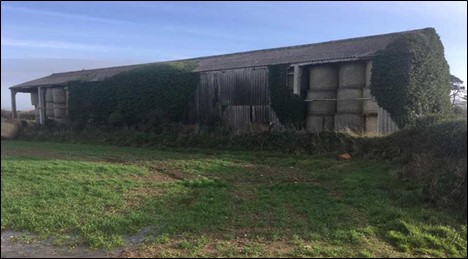Blog
Barn Conversions: Good planning prospects and financial incentives for commercial development
The incentives for investing in new agricultural buildings are currently the strongest they have been since April 2009 due to the launch of the Structures and Buildings Allowance (SBA) in autumn 2018 and its enhancement in the 2020 Budget. This will support business investment in constructing new structures and buildings, and the improvement of existing ones.
The SBA is not specific to agriculture so it could be used to convert a former grain store into a premise for a new commercial use, strengthening the business case for investing in new agricultural buildings or alternative storage arrangements.
The planning system is also currently receptive to such changes of use.
Permitted Development rights enable farmers to change the use of up to 5,382 sqft (500 sqm) of agricultural buildings to a flexible commercial use under Class R of the Town & Country Planning (General Permitted Development) Order 2015 As Amended. The commercial uses allowed are diverse and include the following:
- Shops
- Financial and professional services
- Restaurants and cafes
- Business
- Storage or distribution
- Hotels
- Assembly and leisure
This is subject to a number of exclusions and certain criteria must be met:
- The subject building needs to have been solely in agricultural use on the 3rd July 2012 (or when it was last in use).
- If brought into use after 3rd July 2012, it must have been maintained in that use for a minimum of ten years.
- The total cumulative floor area of the existing building(s) – within the planning unit – which have changed under Class R rights, must not exceed 500m².
- The building(s) must not be:
-
- a listed building (or within the curtilage of a listed building)
- a scheduled monument (or part thereof)
- form part of (or be located within) a safety hazard area
- form part of an explosives storage area
An inspector recently granted Class R prior approval for the change of use of a barn in Cornwall to an aparthotel after deciding that the council’s concern that it amount to a rebuild rather than a conversion was incorrect.
The council considered that works to use the open-fronted barn, as pictured, as a hotel would be of such magnitude as to amount to a rebuild and outside the scope of permitted development rights. The inspector, however, rejected this approach, distinguishing between Class R and Class Q (Permitted change to a dwelling). In allowing the Appeal he stated that Class Q rights are for a change of use together with building operations reasonably necessary to convert the building and requires an analysis of whether a proposal would be a conversion or a rebuild, whereas Class R is concerned purely with the change of use and there is no conversion issue to consider.
The result is that a far greater number of structures will be suited to changes of use under this type of Permitted Development.
The procedure to apply under Class R varies depending upon the size of the building and we would be delighted to discuss any proposals for this type of development with you.
For further information on this and to discuss any related planning matters please contact our Head of Planning Dan Hewett


